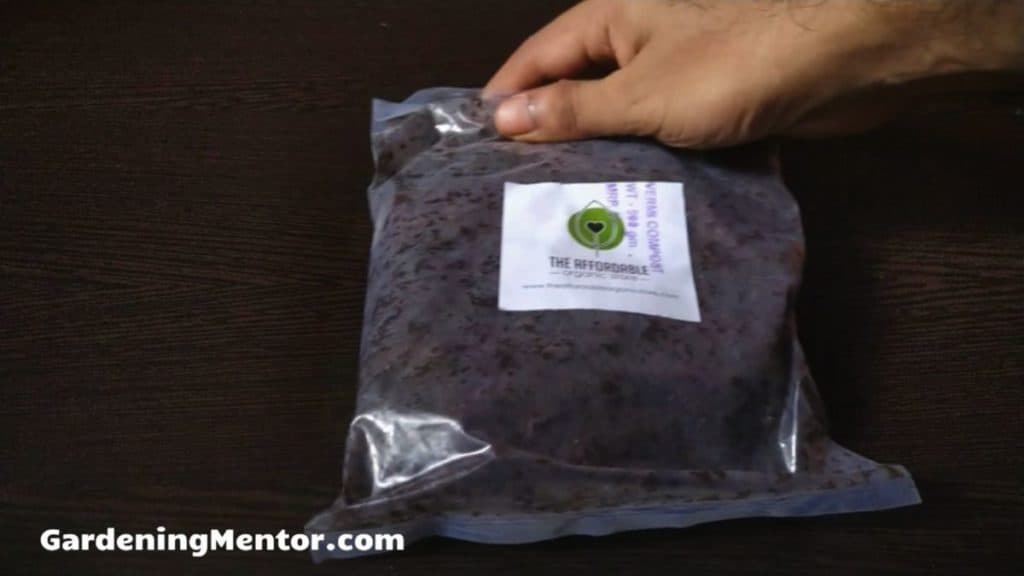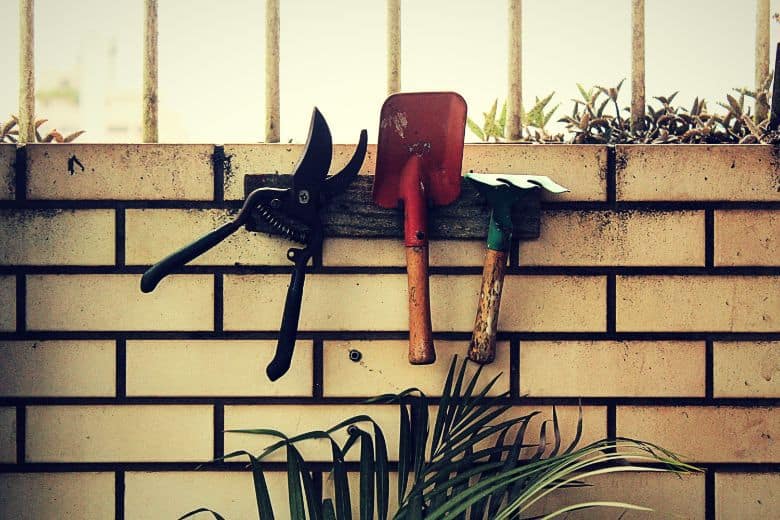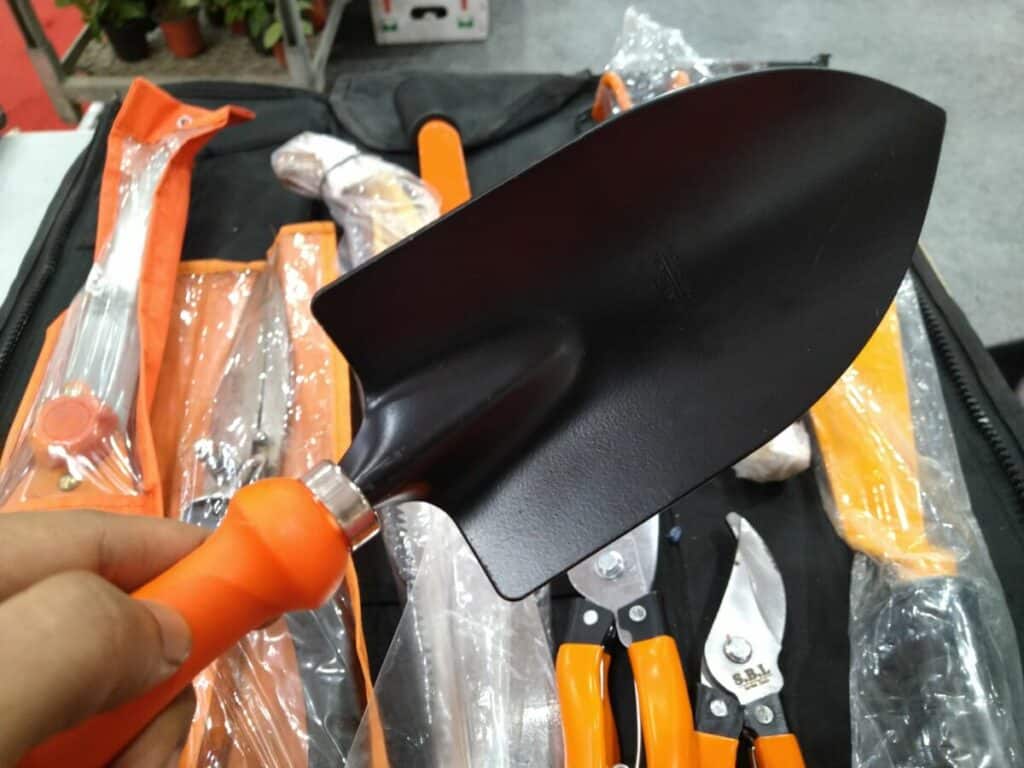Hope is a wonderful thing.
And you’ve been full of hope for your garden. You’ve waited the dull season winter hoping to grow wonderful new plants next year.
And now that spring is arriving, your hopes are as high as ever.
But there’s something you need to do before that. Something that is inevitable if you want a great garden.
That’s a good spring garden cleanup.
It can be a chore to do this cleanup but it doesn’t have to be.
Follow the steps that we’ve mentioned and you’ll be well on your way to a clean garden ready for growing new plants.
Why do you need a spring garden cleanup?
Your garden is a mess during fall and winter.
All those dried leaves, branches and debris are not good for your garden. You don’t want to invite pests, diseases, and weeds into your garden, do you?
That’s why you need to do a spring cleanup and get rid of these unwanted things. This will help getting your garden ready for spring.
When should you start your spring garden cleanup?
So I’ve sold you on the benefits of a spring garden cleanup. But when’s the right time to do this?
It depends on the region you live in and the start of spring.
You’ll need to wait till the daytime temperature is warm enough and the soil has dried. If the soil is wet and you walk on it, you’ll end up compacting it. Not a good thing before you want to grow new plants.
1. Review the garden before cleanup
You know the best way to fail? Don’t plan something. And the same is true for the spring cleanup.
Take a review of your garden and the things you’ll need to do as part of the cleanup.
Walk through the garden and check if there are dead branches, shrubs, and plants. Based on the types of plants and the thickness of the branches, you’ll need the right tools for the job.
You might be thinking of growing new plants, having a new garden bed or new accessories for the garden. Drawing a sketch with the beds, plants, and things marked out is a great way to plan.
If you have a big garden, it may be worth taking the help of an expert gardener or landscaper.
2. Prune the plants
Spring is the best time for your plants to start growing and you can encourage that by pruning branches and stems.
But before you go hunting for your tools, hold on a second. Wait till the daytime temperatures are above 50 degrees Fahrenheit.
That’s because beneficial insects like native bees, lacewings, and parasitic wasps hibernate in the branches and stems of plants during winter. And they’ll come out once the weather is warm enough in spring.
You can prune the perennial plants to ground level so they can start growing again. If you have flowering shrubs and trees, it’s best to wait till they bloom and start pruning after that. Trim evergreen plant branches so they grow in the right direction.
Pruning tools help make things easier for you so choose one depending on the thickness of the branch.
Branches less than ½ inch thick can be pruned with a bypass pruner. Branches between ½ to 1 inch thick can be pruned with loppers. And branches thicker than 1 inch will require a pruning saw.
If there are big tree branches that need pruning, it’s better to take the help of a professional without risking yourself.
3. Remove the dead plants
Plants can die just like everything else.
Annuals are plants that live for one season. They grow foliage, flower, seed, and die in winter. But don’t take them out in winter because they provide a habitat to beneficial insects, birds, and animals.
But when it’s spring garden cleanup time and the daytime temperatures are warm enough you can remove them.
You can pull these plants from the soil and some of them will come out easy. If not, you might need to use the shovel to dig around the soil to get to the roots and pull them out.
If you have vining plants, you’ll need to check if there are any dead vines. Detangle them from the trellises and supports that they’ll be hanging around.
The mulch that you used the last growing season still remains on your garden soil. It has served its purpose and you’ll need to remove it so you can add new plants and new mulch.
There’ll be a lot of dried leaves and foliage from last autumn lying around for the entire winter. You can collect them together with fallen branches and sticks. They can make some good mulch or addition to the compost pile.
4. Remove weeds from the garden
Weeds are a nuisance in the garden.
Spring is the best time to remove weeds like tap-rooted dandelions and invasive violets from the garden. That’s because they’re easy to see and the damp soil makes it easy to pull them out of the ground.
If the roots are not too deep, you can pull them out with your hands. But for deep-rooted weeds, it’s best to use a tool to get the roots out. Otherwise, you’ll slow down the growth of the weeds but not eliminate them.
You could use a hand trowel to dig the soil around the weeds and get them out. If the roots are are lot deeper, it’s best to use a shovel or weeder to get them out.
Keep a small bucket nearby and throw the weeds into them as you pull them out. You could add the weeds to your compost pile if you know the temperatures will kill them. But if you don’t, it’s best to be safe and throw the weed plants away.
Once you’re done removing the weeds, it’s good to cover the soil with a mulch. This will help prevent any remaining weed roots and seeds from growing out of the soil.
5. Make and use compost
Spring cleanup means you’ll end up with a lot of organic matter. This could be dead plants, debris, sticks, branches, and weeds.
They’re the best material you can get for making your own compost. There are a ton of ways you can make compost such as using a compost pile, compost pit, or a compost bin.
It’s great if you can shred the leaves and chop up the branches and sticks before adding to the compost pile. They’ll decompose faster and your compost will be ready sooner.
Whether you should use weeds to make compost or not depends. If your compost pile reaches high temperatures to kill the weed plants and seeds, go ahead. But if not then it’s safer not to use the weeds.
Remember to keep the pile moist as a wrung sponge by sprinkling some water when you see it’s dry. And turn the compost pile every few weeks to provide it with plenty of aeration.
6. Check the soil in your garden
If there’s one thing most crucial to a good garden, it’s how good the soil is.
And spring is a good time to check how well it is doing. It may be that the soil is depleted of essential nutrients from the last growing season. That’s why you need to test the soil for how good it is for the next growing season.
But how can you do that?
The easiest thing you can do is get a soil test from your local extension service. Send them a few samples from your garden and they’ll let you know everything about your soil.
The tests will show the pH level of the soil and the nutrients missing in the soil. And it’ll show what you need to do to improve those in your soil.

Sure, there’s a small fee for it but it’s not that much considering the amount of information you get to improve your soil.
You may need to add sulfur to lower the pH level or limestone to increase the pH level. You may need to add fertilizer to improve the nutrients in the soil.
The best way to keep your soil good is to keep adding organic compost to it. When you keep doing it for several years, it ends up being so good you don’t need to amend it.
7. Add mulch to your garden
If you want a garden that’s easy to maintain, you need to add mulch.
Mulch is a thick layer of organic or inorganic material that you add on top of your soil. The main idea is that it creates an environment that is good for the soil and the plants.
Adding a layer of mulch to your garden helps regulate the heat in the soil. When it’s hot, it’ll keep the soil cool and when it’s cold, it’ll keep heat trapped in.
Mulch will help keep the moisture in the soil and prevent it from quick evaporation. It also helps smother the weed seeds that might be present in the soil.
If the mulch is organic, it’ll add nutrients and organic material to the soil when it breaks down.
It’s good to delay adding a mulch till the day temperature is consistently warm. That’s because beneficial insects like clearwing moth, soldier beetles, and native bees overwinter in soil burrows and come out when it’s warm.
If there’s mulch from last year that you can use, loosen it up to allow water and air to reach the roots.
You can use several organic and inorganic materials as mulch. This includes leaves, grass clippings, wood chips, bark chips, straw, hay, cardboard, newspaper, rocks, gravel, plastic sheets, landscape fabric, and rubber mulch.
8. Edging your garden
Gardens look pretty if we take care of them. But that goes out the window in winter when we tend to ignore them.
One of the ways this shows is when the grass from your lawn moves over to your garden. Not something you want. That’s why you need to edge your garden.
It will help make your garden bed look more polished and keep grass from growing there.
Spring is the best time to do this because the soil is moist and it’ll be easy to pull the stray grass. You can add the plucked grass to your compost pile.
9. Clean up the hardscape surfaces
A garden is not only about the plants.
There are a ton of other things you need to take care of as well. This could be walkways, patios, flagstones, pavers, fences, drip lines and irrigation systems.
If the gravel is missing from the walkways and patios you’ll need to rake it in or add some fresh gravel. You need to refill the sand that might have gone missing between the flagstones.
If the pavers have gone out of place, you’ll need to put them back in. You can use a company like Aviara Pavers to reinstall them. You can use a pressure washer to clean up the algae and leaf stains.
If the fence is damaged, you’ll need to replace the wood. If it needs painting, scrape off the old paint and add a new coat. Check if the decks and arbors need repairs and fix them.
Check the drip lines and irrigation systems in the garden if they are working fine. Check if they are covering the area you need and are placed in the right position.
If you have furniture on the patio, wash them using a hose with soapy water to remove scum. Clean leaves and debris from your deck, patio, and porch and remember to check the corners and crevices.
10. Start planting new plants
The moment you’ve been waiting for the entire winter is to grow new plants. And spring is the best season to do that.
But hold on to your horses for just a second.
Make sure that the day temperatures are warm enough and the soil has thawed before you think about planting. You don’t want to kill your plants before they even start growing, do you?
If the temperature is still a bit cold, you could start seed indoors and be ready for the time when it’s OK to plant. You could even start with some hardy trees, plants, and shrubs that don’t mind a bit of cold to start growing.
If you’ve any plants you want to divide or transplant this is the best season. Do it as soon as the plant emerges and before it can start it’s growth.
You’ll need to separate out the mulch a bit from the area when you need to plant the seeds or the transplants.
Tools you can use for spring garden cleanup

There’s so much work involved in a spring garden cleanup. But some tools can make your life a little easier.
Hedge trimmer – can help you trim the hedges of shrubs and beautify them.
Hand saw, lopper, pruner – Pruning the branches of shrubs, plants, and trees becomes easier with pruners. If you’ve branches less than ½ inch thick, pruners will get the job done. If you’ve branches between ½ to 1 inch thick, loppers work well. But if you’ve branches more than 1 inch thick, a hand saw is what you need.
Tarp – A tarp is useful when you’re pruning branches, raking leaves, and collecting debris. You can place them on the tarp where they’ll be ready for your compost pile.
Garbage can – It’s handy to have a garbage can near you when you’re pulling out weeds and diseased plants from the garden. You can dump them in it.
Trowel – A trowel is useful to dig into the soil when you want to pull out weeds with roots. It’s also useful when you want to dig a hole to transplant a new plant.

Shovel – A shovel is useful for digging out weeds that have strong and deep roots. It’s also useful to dig out the roots of plants and trees that are dead and need to be removed.
Garden rake – Your garden will have a lot of dried leaves as a result of the fall and winter seasons. You’ll need a garden rake to collect the leaves for your compost pile.
Gloves – A good pair of gardening gloves is useful while spring cleaning. It’ll help keep your hands clean and protect them from thorny shrubs and bushes.
Step stool – A step stool can help you reach the hard-to-reach places on a shrub or a tree while pruning or trimming.
Wheelbarrow – It’s hard to carry around the gardening soil, compost, or mulch you need to add to the garden. That’s when a wheelbarrow can come in handy.
Conclusion
I know a spring garden cleanup looks like a lot of effort but it doesn’t have to be.
You can do a little bit every day and before you know it your garden will be clean. And ready for the wonderful growing seasons of spring and summer.
Take that first step to review your garden and see what all needs to be done to get it right.
It’s going to be a new beginning for your garden and plants.

Fact Checked, Written, and Published by Kevin Rodrigues
Kevin is the founder of Gardening Mentor, a website that aims to teach people to grow their own food in a limited space. As a self-taught gardener, Kevin has spent several years growing plants and creating gardening content on the website. He is certified in Home Horticulture and Organic Gardening from Oregon State University. He has a Post Graduate Diploma in Horticulture and Landscape Gardening from Mumbai University.
Read more
